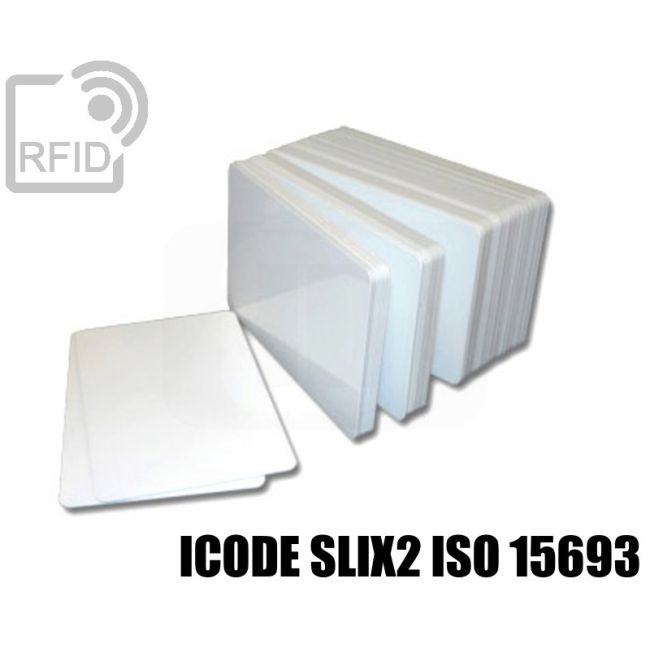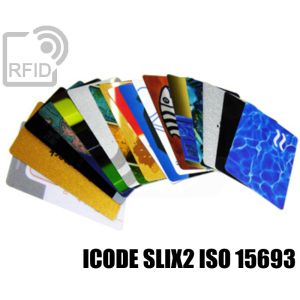White RFID card NFC ICode SLIX2 iso 15693
SKU
CR01C85
White RFID cards. Neutral proximity identification cards and badges (contactless radio-frequency smart-card). ISO 7810 laminated plastic cards in PVC or PET. NFC ICode SLIX2 iso 15693 RFID chip read and write HF 13,56 MHz ISO 15693 / ISO 18000-3.
- 200 pz to € 0.349 each 15% discount
- 500 pz to € 0.320 each 22% discount
- 1000 pz to € 0.304 each 26% discount
- 2000 pz to € 0.271 each 34% discount
- 3000 pz to € 0.259 each 37% discount
ISO 7810 ID-1 standard size white PVC laminated neutral cards with dimensions of 85.60 53.98 mm (3.370 2.125 in) and rounded corners with a radius of 2.88-3.48 mm. Originally used for bank cards today it is also used in many countries for driving licenses and identity cards and in many commercial sectors for loyalty cards, identification and business cards. NFC ICode SLIX2 iso 15693 RFID chip read and write HF 13,56 MHz ISO 15693 / ISO 18000-3 memory 2560 bits / 320 bytes = 80 blocchi x 4 bytes / 8 bytes tag ID original NXP.
APPLICATIONS
- Personal identification
- Fidelity card / Loyalty cards
- Gift cards
- Electronic money
- Holiday parks
- Camping / Campsites
- Access control
- Attendance
- Holtel and hotel doors
- Energy saving switches
APPLICATIONS
- Personal identification
- Fidelity card / Loyalty cards
- Gift cards
- Electronic money
- Holiday parks
- Camping / Campsites
- Access control
- Attendance
- Holtel and hotel doors
- Energy saving switches
| Chip RFID | ICODE SLIX2 ISO 15693 |
|---|---|
| Chip Frequency | HF 13,56 MHz |
| Standard protocol | ISO 15693 / ISO 18000-3 |
| Compatibility NFC | Type 5 Tag |
| Chip Manufacturer | NXP |
| Material | PVC |
| Dimension | 85,60 × 54 × 0,9 mm |
| Weight | 6,9 g |
| Chip functions | The ICODE SLIX2 is the successor of ICODE SLIX, fully backwards compatible, that offers improved user memory size and performance such as increased reading range and flexible user memory segmentation with separate access conditions. ICODE SLIX 2 can be operated without line of sight up to a distance of 1.5 m (gate width). No battery is needed. When the smart label is positioned in the field of an interrogator antenna, the high speed RF communication interface enables data to be transmitted up to 53 kbit/s. An intelligent anticollision function enables several tags to operate in the field simultaneously. The anticollision algorithm selects each tag individually and ensures that the execution of a transaction with a selected tag is performed correctly without data corruption resulting from other tags in the field. ICODE SLIX2 offers 2560-bit of user memory, organized in 80 blocks with 4 bytes each (last block reserved for counter feature) with 50 years data retention and a write endurance of 100.000 cycles. Every device also has a 8-byte Unique identifier, a lock mechanism for each user memory block (write protection) and passwords to access memory management features such as read access, write access and Privacy Mode. |



